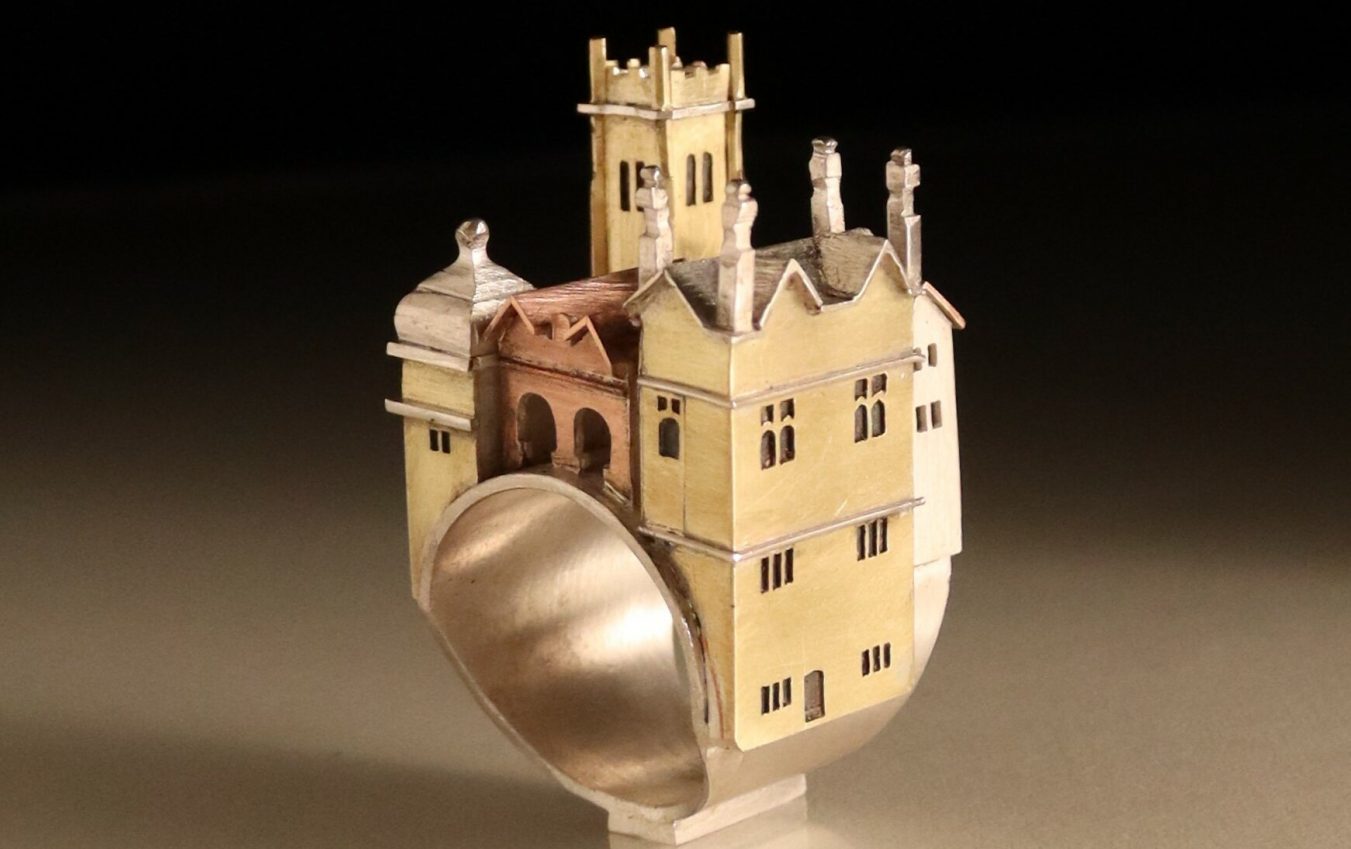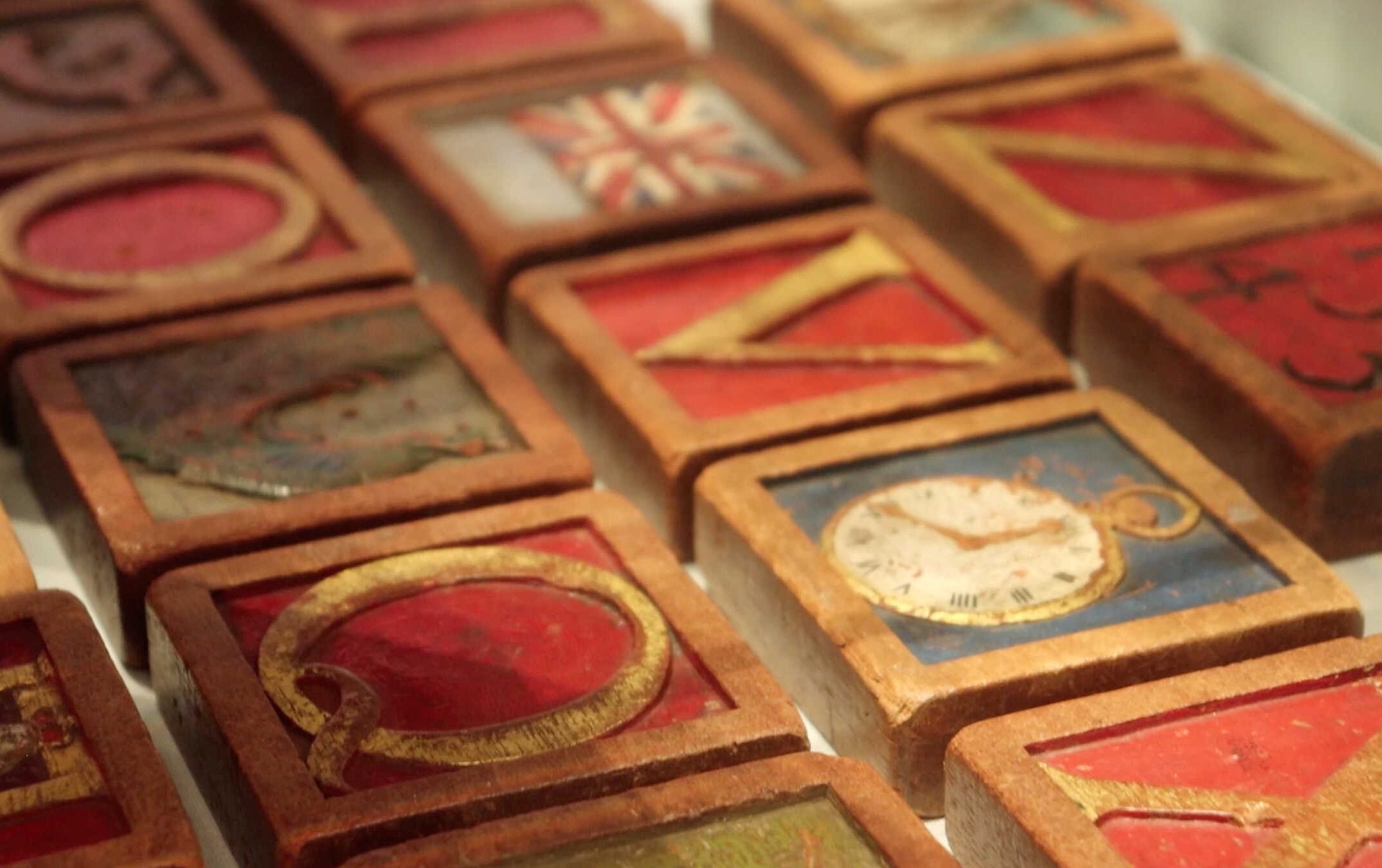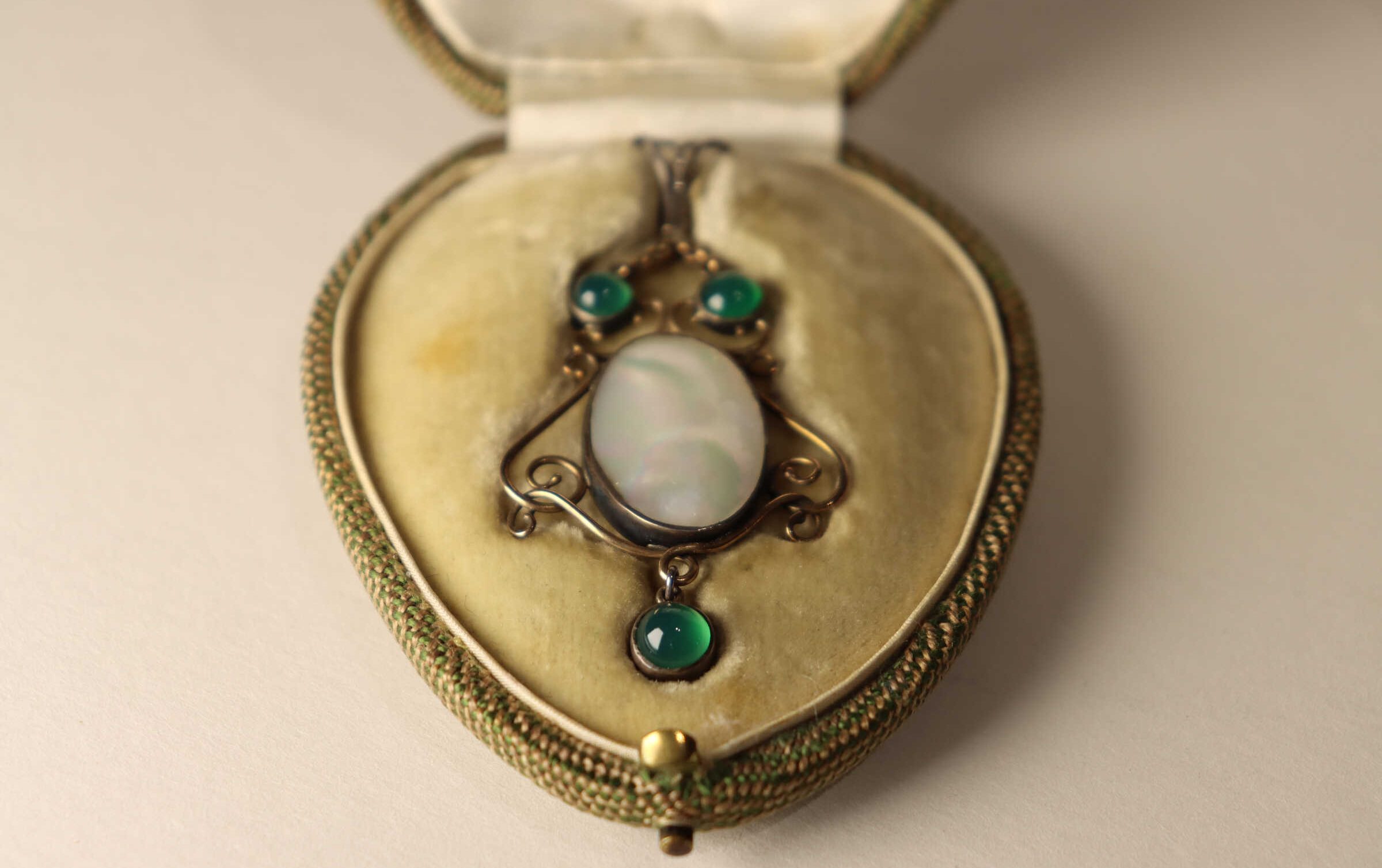The Guild of Handicraft Trust aims to preserve and promote the work of artists, designers and craftspeople working in the north Cotswolds since 1900, and therefore aims to collect work relevant to this theme.
We wish to create a collection which will give a representative picture, in some depth, of the story of craft and design in the north Cotswolds since about 1900. An area bounded on the west, north and east by the geological boundaries of the Cotswolds, and on the south by the A40. Our present collections only go some of the way towards doing this.
Below are a selection of items from our collection, we will change these over time.

This ring, commissioned by the museum, captures the architectural spirit of Chipping Campden’s historical and iconic buildings.
Vicki Ambery-Smith is known for her delicate small-scale jewellery and ornate boxes. All her jewellery is designed to be worn and therefore the three-dimensional structures have to be adapted rather than solely replicated in miniature.

Designed by Paul Woodroffe with music by Joseph Moorat. Woodroffe decorated books, designed book plates and bindings from the 1890s as well as stained glass. His work combines a lively charm with a precision of drawing.

Designed by C.R. Ashbee and carved by Alec Miller. These much-loved bricks were made for Mary, the Ashbees’ eldest child.

Robert Welch was inspired to design for stainless steel by a visit to Sweden in 1954 and this range was an attempt to provide a British alternative to imports from Sweden. The toast rack received the Design of the Year Award from the Council of Industrial Design in 1958.

During the 1920s there was growing concern about changes to the character of Chipping Campden. In 1924, F.L. Griggs and other artists and craftsmen formed The Campden Society and also organised exhibitions between 1924 and 1939 to promote the reputation of the town and support Cotswold makers.

F.L. Griggs first came to Chipping Campden in 1903 and fell in love with the town and its buildings. He worked on a number of projects to illustrate Campden’s architecture; this volume published in 1940 includes an introduction and notes by his friend, Russell Alexander.

Earthenware with decoration in white slip. His early wares were influenced by the pots made by Edwin Beer Fishley at Fremington, Devon that Cardew had seen and admired on childhood family holidays.

During the building of The Magpie and Stump house in Chelsea some glass bottles which Ashbee believed to be Elizabethan were excavated. In the late 1890s he designed a version made for him by the glassworks of James Powell & Sons and then, in his own workshops, cradled the vessel in a delicate network of silver wires. This was one of his most successful and enduring designs.

This pendant, in its original case, is a fine example of Ashbee’s mature but simple jewellery from the Campden period, with its big irregular pearl blister at the centre, the scrolling ironwork that is both decorative and constructional, and its simple colours – the green chrysoprase was his favourite stone.

The decoration was inspired by the pebbles on Chesil Beach. Designed by Welch and made by John Limbrey.

Page spread from Gray’s Elegy printed in Caslon type on vellum by the Essex House Press in 1901. George Thomson designed the frontispiece image which was then cut on a wood block and hand-coloured. Also hand-coloured were the decorative initials by Florence Kingsford.

One of the oldest forms of cover decoration, ‘tooling’ involved the use of metal devices known as finishing tools. Usually heated, these were impressed by hand into the leather surface to create a pattern or design. Katharine Adams’ bindings were intricate and usually featured fine, pictorial gold details on leather.
+44 (0)1386 841951
admin@courtbarn.org.uk



October – March
Tuesday – Sunday 10am – 4pm
April – September
Tuesday – Saturday 10am – 5pm